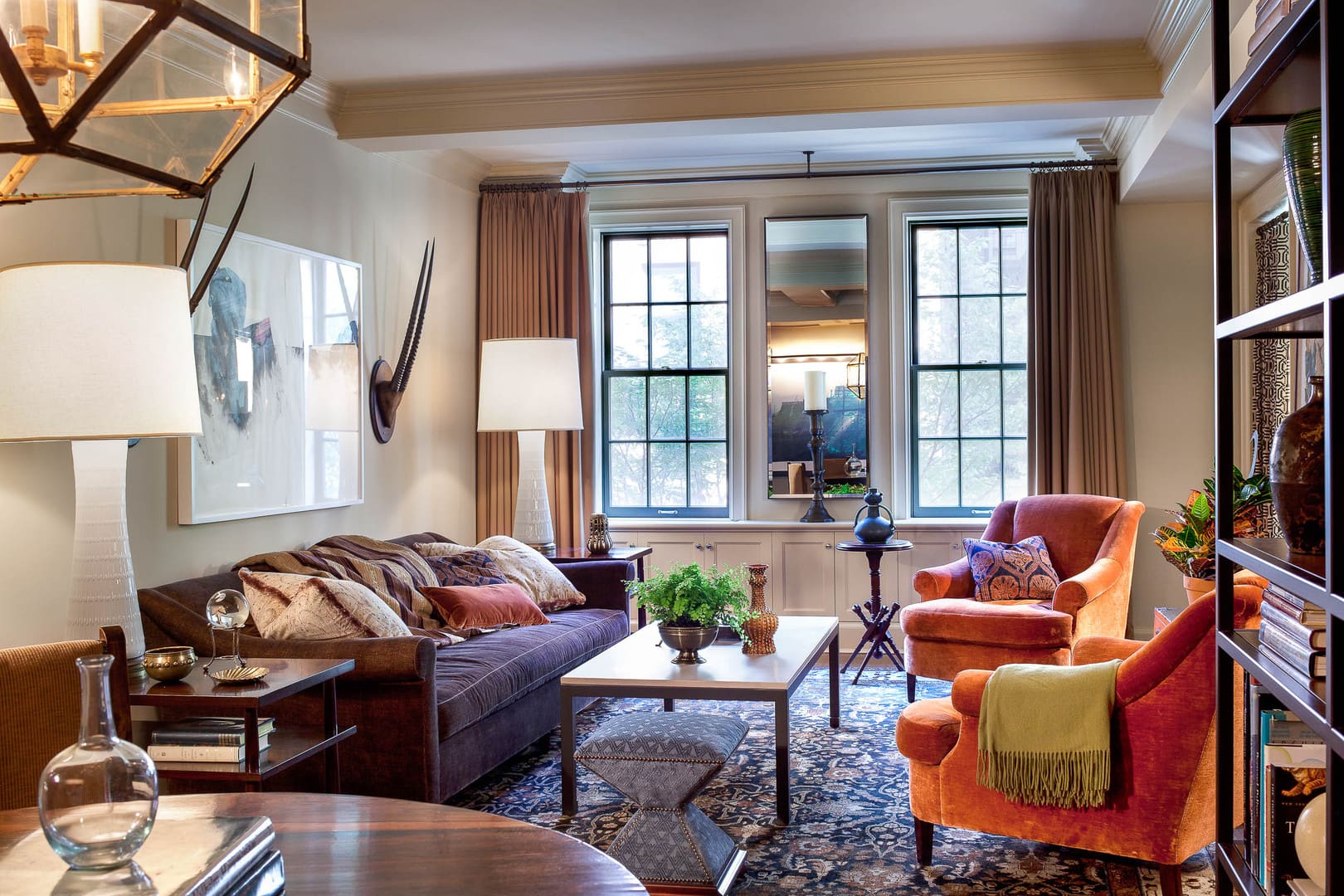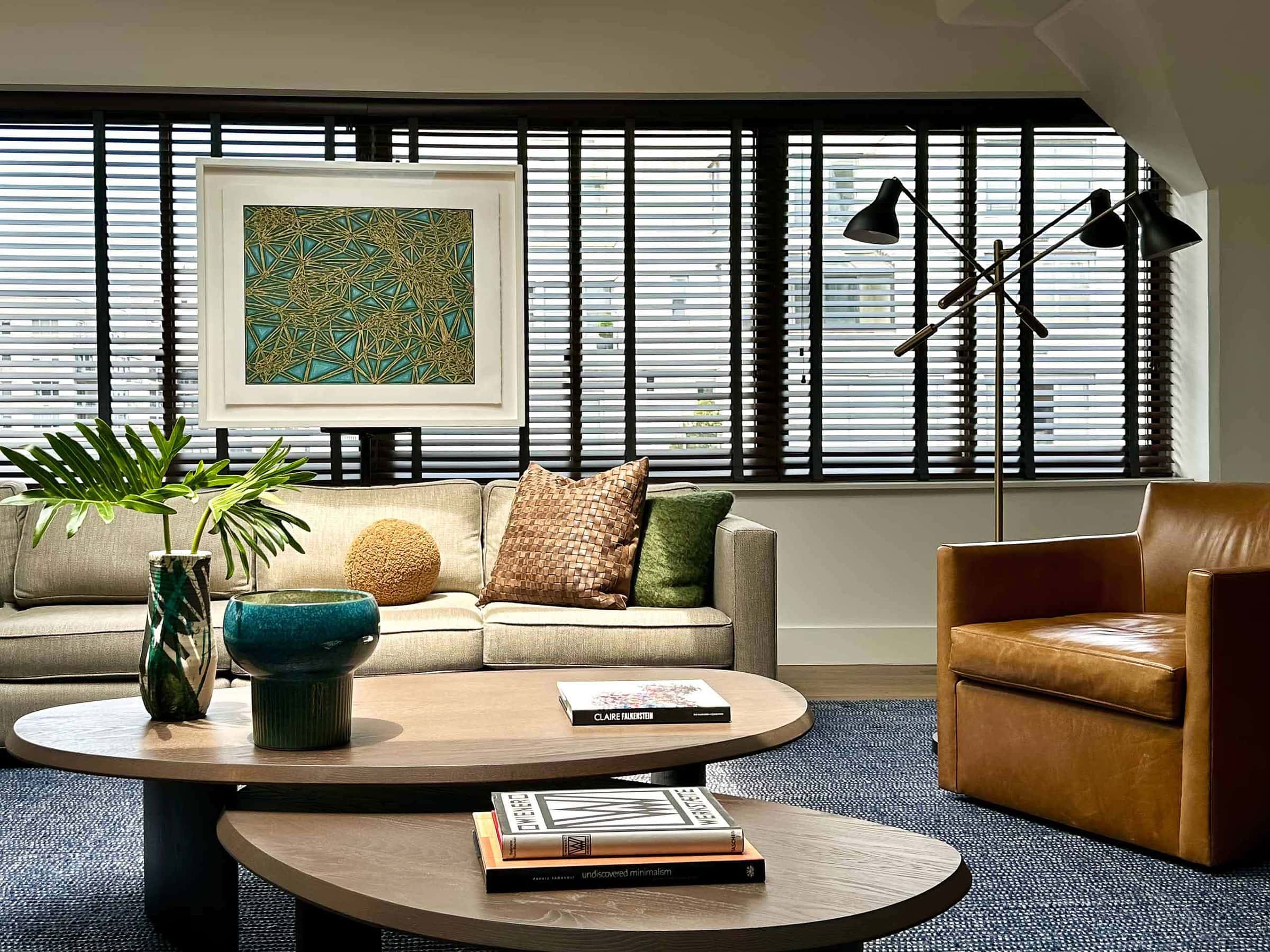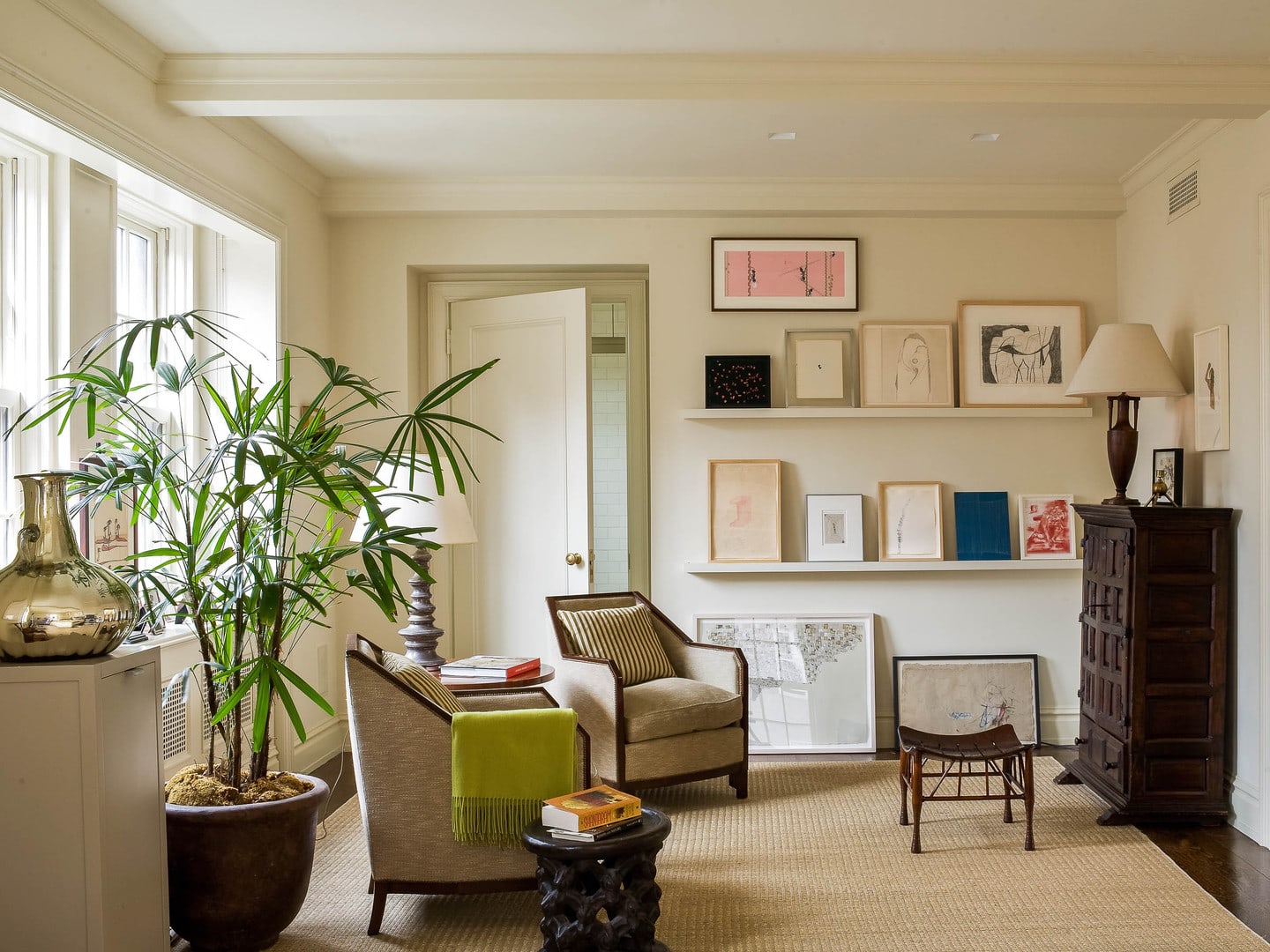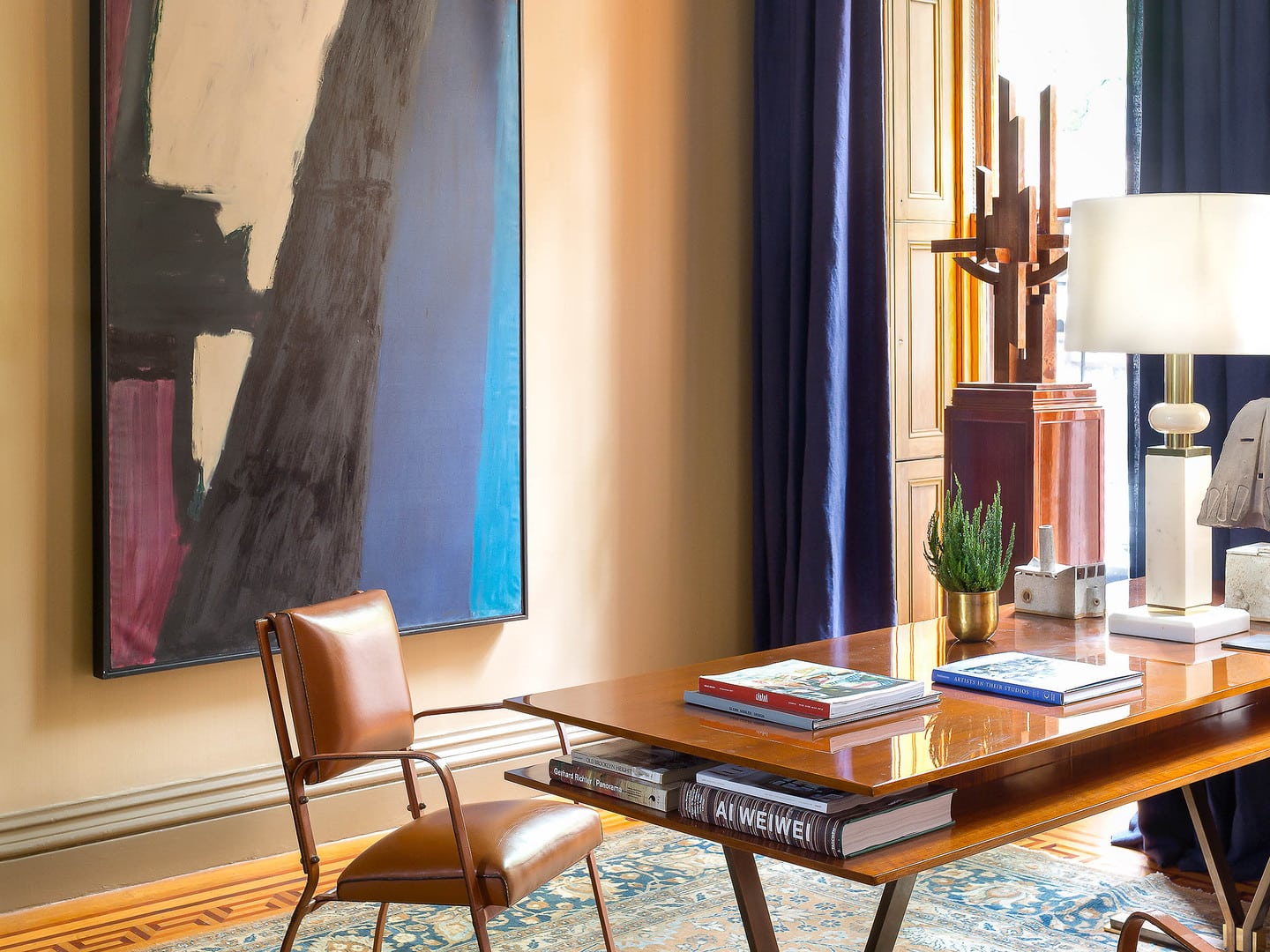An antique Tabriz area rug with stylized floral pattern in indigo and cream, is keynote of this richly patterned and textured room. The custom Belgian sofa is from Jonas. Interesting objects–two pairs of mounted oryx horns; a cross-legged Aesthetic Movement table–add detail and depth.
GREENWICH VILLAGE – NYC
Pied-à-Terre
The Ottoman Empire, with its richly figured carpets and ornaments, was the vision this Colorado couple had for their two-bedroom condominium in a Greenwich Village building renovated by designer Victoria Hagan, who had preserved its prewar character.
We decided to articulate the room separations by using casings, moldings, and a portiere to create a greater sense of sequence to the rooms. To further emphasize room separations, we changed coloration from one room to the other, with the entry lacquered a vivid cinnabar. Judiciously placed mirrors expanded and lightened the spaces.
The clients were very interested in vintage textiles, so we introduced layering of Persian rugs and embroidered or tapestry wall-hangings. A selection of patterned textiles, woven or embroidered rather than printed, and often antique in appearance, are carefully juxtaposed. Many of the upholstery and pillow fabrics are actually new, but they have a luscious, aged look.
The result is not a recreated Turkish interior, but a place where imagined travel meets the incomparable comfort of home, in this case, a second one in one of the most charming neighborhoods New York City has to offer.
A provenance with panache: this Italian walnut Baroque chest of drawers, 19th century with 18th century elements, is from Loring House, Massachusetts, home of the Codman family.
The dining room became a study which can be used for occasional entertaining, centered upon the Empire round table the clients brought from Colorado. Chairs are from a 1930s ocean liner. Meant to be flexible, the table may be set up as a dining table, buffet, or bar. At right, a portiere in Kravet’s double-sided “Interweave” fabric marks the separation from the bedroom.
A place for reflection: a contemporary photograph of a Chinese dam joins a patinated brass ceiling fixture and a crystal orb.
Outsider art, insider ceramics: a charming primitive painted in a hand-made “tramp art” frame joins Arts & Crafts Movement pots.


































